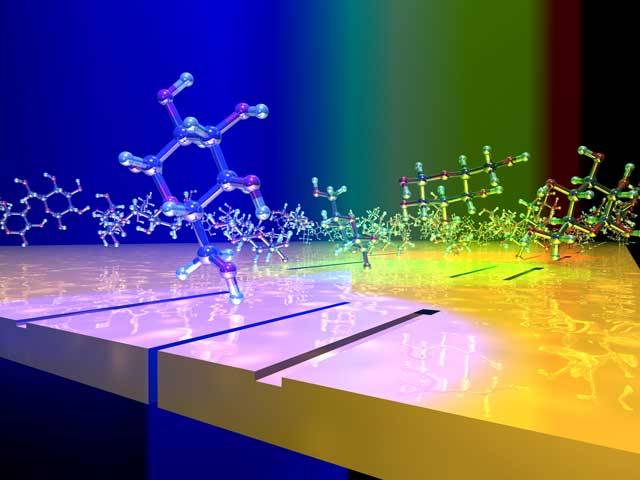_ Nanoelectronics and Plasmonic Particles Department
Formation of (plasmonic nanoparticles) based on the interaction process between electromagnetic waves and conduction electrons in nano-sized metals
Researcher and Author: Dr. ( Afshin Rashid)
Note: Plasmonic is based on the interaction process between electromagnetic waves and conduction electrons in nano-sized metals . Analytically, it is the reason for the rapid drop in energy of electrons when passing through metals, and it was concluded that this energy is spent on the cumulative and oscillatory motion of free electrons in the metal, and it was called a plasmon.
The reason for this naming was the similarity of these electron oscillations to the oscillations of particles in the plasma environment. The term polariton is used for the oscillation of bound electrons in a metal in a state of coupling with phonons of the incident beam. The name polariton was used for quasiparticles that were half matter and half photon, which is the coupled state between a photon of the primary excitation beam and the conduction electrons of the metal, and the term plasmon polariton is used to express the coupling between a photon and a plasmon.
According to some classifications, this group of nanostructures is also called nanoparticles. Factors affecting the properties of nanoparticles are the size and type of particles. Nanoparticles can be made in different shapes such as spherical, elliptical, cubic, prismatic, columnar, etc., depending on their application. Nanoparticles may consist of a single component or be a combination of several material components. Nanoparticles can also be pure or a combination of several different materials. The importance of the nanoscale is in changing the properties and characteristics of materials at these dimensions. Properties such as electrical conductivity, electromagnetic properties, etc. The beginning of changing the properties of materials by reducing them depends more than anything on the type of material and the desired property. For example, as the dimensions of a material decrease , generally some of the electromagnetic properties of nanomolecular materials such as the conductivity of nanoparticle materials improve. This increase in strength does not only occur within a few nanometers, and the strength of a material of several tens or even hundreds of nanometers may be much greater than that of a large-scale bulk material. On the other hand, changes in some properties, such as conductivity in nanotransistors and electromagnetic properties in nanowires, may occur at dimensions of only a few nanometers. Surface plasmon resonance in nanometer-sized structures is called localized surface plasmon resonance.
Conclusion:
Plasmonic is based on the interaction process between electromagnetic waves and conduction electrons in nano-sized metals . Analytically, it is the reason for the rapid drop in energy of electrons when passing through metals, and it was concluded that this energy is spent on the cumulative and oscillatory motion of free electrons in the metal, and it was called a plasmon.
Researcher and Author: Dr. ( Afshin Rashid)
Specialized PhD in Nano-Microelectronics




